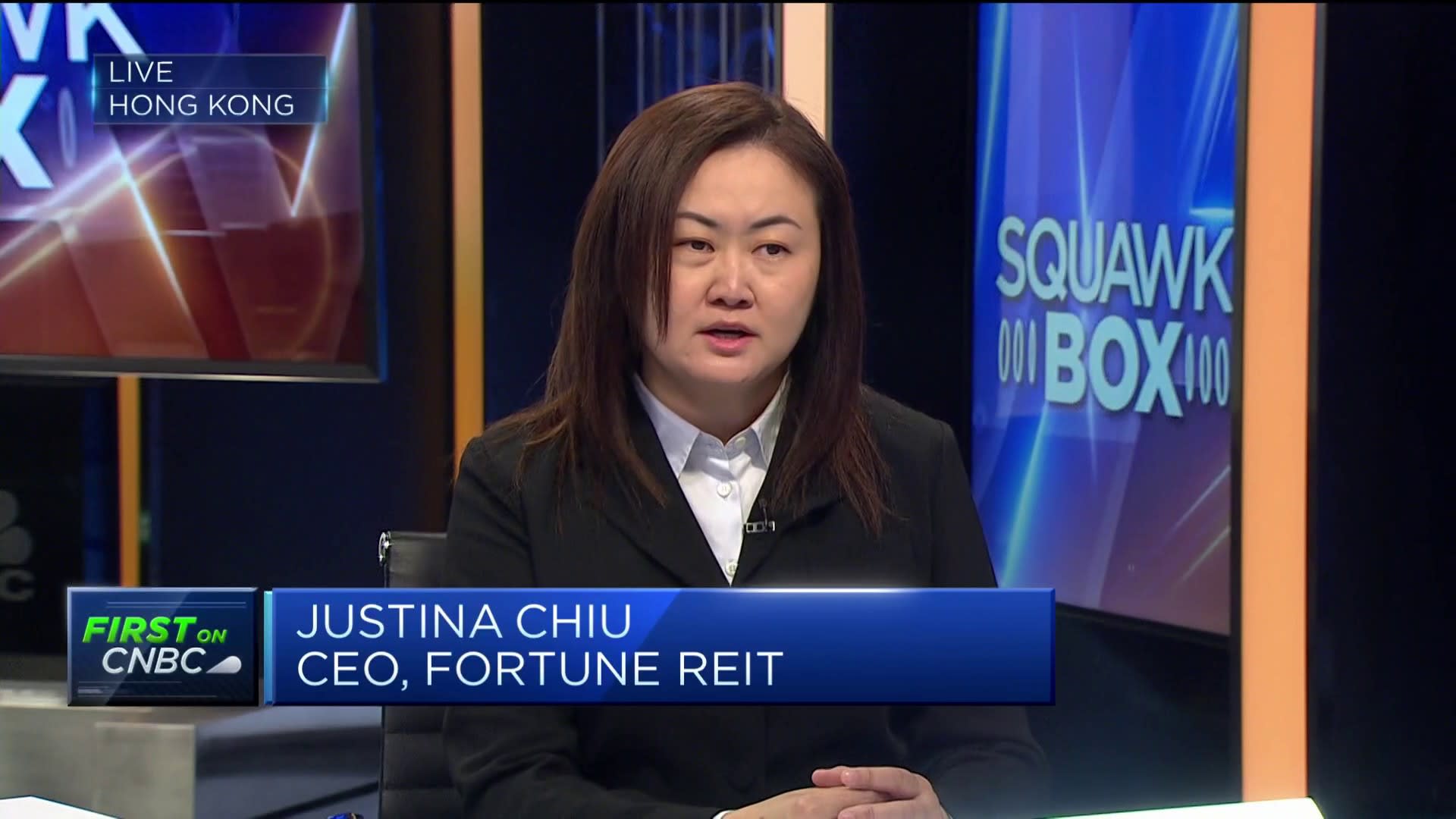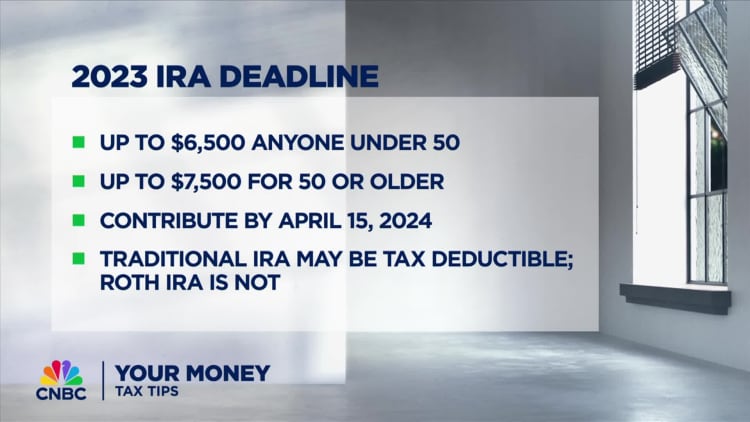The “Value-Add” Playbook: How to Boost Equity
Want to turn your rental property into a cash-flowing machine? What about boosting your property’s equity by tens or hundreds of thousands? The “value-add” strategy can do all this and more, but you’ll need to know the right moves to make. Top real estate investors have been using value-add on their rental property portfolios for decades, turning lackluster rentals into financial freedom-producing properties, and you can do the same IF you know how to spot value-add opportunities.
So, today, we’re showing YOU how to make MORE cash flow and explode your home equity by tweaking your rental properties in the right ways. Both David and Rob have done this numerous times across multiple properties. In fact, David even shares a real-life example of how he increased the cash flow on one of his rental properties by over $10,000/month thanks to an interesting strategy most rookie real estate investors would completely overlook.
Not only that, Rob was able to turn his first Southern California home into a multifamily rental that hosts long, medium, and short-term tenants, and rakes in massive cash flow almost a decade after purchasing it. Whether you’ve got small, big, long, medium, or short-term rentals, you can use value-add to create more passive income and bigger equity gains. Stick around as we give away our secrets on the best value-add moves to make.
David:
This is the BiggerPockets Podcast show 911.
What’s going on, everyone? This is David Greene, your host of the BiggerPockets Real Estate Podcast. For those of you who are new here, welcome. And for all investors today and tomorrow that have been with us for a long time, welcome back. I’m here today with my rad co-host, Rob Abasolo. Rob, how are you?
Rob:
It feels good to be your partner in crime in today’s episode. And listen, if you’ve been a listener of the BiggerPockets podcast for a long time, then you’ve probably heard us talk about this idea of adding value to properties. Today we want to slow down and actually talk about what we mean, what does adding value actually look like, what are the different ways you can increase a property’s value and how you’re going to decide which strategy is going to work for your specific property.
David:
That is right. If you’ve ever heard people talk about value add and thought, “Well, thank you, but what does that actually mean?” After today’s show, you’re going to walk away loving us. This is an emergency in real estate on episode 911, we’re going to be covering it.
Rob:
The listeners have thrown up the Bat Call, so you and I are going to come and squash this one head on. Today’s episode, let’s get into it.
David:
I can’t wait. Let’s get into this today. What do we mean when we say add value to real estate?
Rob:
One of the ways we phrase this oftentimes on the show is forced appreciation, forced equity. The idea of adding value is, how can you come into a property and make it more valuable? I know that that sounds very basic there, but the idea is you got this property that performs at a baseline metric. What can you do from a renovation standpoint? What can you add? What kind of square footage is able to be converted in this property to make it a more valuable asset for you to list it on the market and resell?
David:
That’s right. We typically look at real estate from two perspectives that it values us, cash flow and then the equity that’s in the property. If you can increase the value of the property, you can increase the equity. And if you can increase how much you charge for rent or how much income you bring in, then you can charge the value from that perspective. What do you think are the two most common ways that people think about when they want to add value?
Rob:
Yeah, so it comes out to two very basic principles here. Can you make it bigger? Can you make it better? Right?
David:
Yeah. For a long time, real estate investors didn’t really have to worry about this. Value add was sort of like the icing on the cake. We typically just looked, analyzed for cashflow, bought the highest cash-on-cash return we could. And hey, if you could add some value, a little razzle dazzle in there, that was cool. But in today’s competitive market, you really have to have goggles to look at a property and see how you can take it from zero to hero or you might not be able to make the deal work at all.
Now, Rob, you and I have conversations quite often about what we can do to increase the value of property, really bring it to its highest and best use. Sometimes that means increasing the ADR. Sometimes that means increasing the rent that you can get on a lease. And sometimes that means actually increasing the usefulness of the property. What are some ways that you make a property worth more even if you can’t add to the square footage?
Rob:
Yeah. So this goes into the second category, right? We talked about making it bigger. Category number two is make it better. How can you actually improve the property and make it better so that people are willing to pay you more to stay in that property as a long-term rental or as a short-term rental, right? Obviously, there’s going to be differences in a long-term rental approach. In a long-term rental approach, we’re talking about maybe a minor renovation, maybe we’re talking about a full on gut renovation that modernizes the inside that allows you to increase the overall monthly rent on that property. And then when you’re talking about short-term rentals, I mean, it’s not too dissimilar than that because you still want to a nice modernized place. But oftentimes, you get to this fork in the road, I guess, as a short-term rental where you ask yourself, “Well, do I want to spend my money on the actual remodel of a property or do I want to spend my money on the amenities?” And this is where we start getting into that better territory.
And this is something that you and I have done recently with one of our properties where we invested about $22,000 into our Scottsdale property to resurface our pickleball court. And that makes it better because now people see those photos and are willing to pay more money every single stay. And as a result, we have increased the average daily rate, you mentioned that earlier, the ADR, and our yearly income. And now, overall we make way more money as a result of focusing on the better versus making it bigger. Because that property is already 6,000 square feet, we don’t need to make it bigger, we need to make it better.
So you’re the BRRRR guy, so obviously you’re a little bit more privy to how this works on a long-term rental. How do you go about making properties better from a long-term rental perspective?
David:
Yeah, that’s a framework that my mind is kind of put together at this point. So sometimes you can make it better by adding a unit to it. So you have an entire area that could be rented out that couldn’t be rented out before. But then you got to ask yourself the question of, what does this need to be able to exist as a standalone unit? It’s going to need a separate entrance, it’s going to need its own windows, it’s going to need kitchens, it’s going to need bathrooms. So sometimes just adding plumbing to certain areas and running electrical to it right away makes the property better because now I can add a kitchenette, I can add a bathroom. I have a whole separate unit that can be rented out. You’re also adding bathrooms to the count on the house. And if it’s a nicer house and it doesn’t have a lot of bathrooms, that alone can make it appraised for more.
I also will add bedrooms to a property. So sometimes I find a property that’s like 3,000 square feet and it’s got three bedrooms. Now there’s always bedrooms in that property that could easily be converted they just don’t technically qualify. So sometimes I’ll add closets. Sometimes I’ll frame off like a den or an office or a living room with French doors, and boom, I’ve got another bedroom there. But anything that’s going to make it look on the MLS if I want to go sell that property is having more bedrooms, more bathrooms, more square footage or just more useful space will definitely add value to a property.
Rob:
Yeah. You and I have had some really interesting conversations about what makes it worth it for us to invest into a property. Because for me, I see a lot more amenities in arcades and theaters, but the problem when you start getting into that space on the short-term rental side of things is, it’s not dollar for dollar going to add to your equity, whereas square footage and renovations might. And so this is always like the caveat that I tell people is, if you’re looking to do value adds especially on amenities in the short-term rental side of things, keep in mind that those amenities may not translate to a higher sale price, but it could certainly translate to a higher revenue for that particular property.
David:
Yeah, that’s just understanding, is this improvement, are you adding value to the cashflow of the property or are you adding value to the equity of the property? And ideally, you do things that add both. So when I add a whole nother unit to a property, I’m getting more cashflow and I made the property itself worth more. Now sometimes you can’t, and that’s where in the situation like you or me. We’ve got a 2-car garage in our Scottsdale property. We also have tons of covered parking. And it doesn’t rain a whole lot in Arizona.
And generally speaking, I don’t think people need a garage when they stay at a short term rental. They’ve usually got a rental car. It doesn’t matter, so we’re like, “What are we going to do with this garage? Could we make it into a movie theater?” Yes. We’ve talked about adding a golf simulator into there. We’ve talked about adding arcades. All of those things will probably make it rent for more. And we did add value to the property from that sense. But if you go to sell it, the arcades, the golf simulator, that’s not necessarily adding value to the home. So you spent a lot of money that you’re not going to get back on the equity side. And you just have to balance that like, “All right, how much do I expect to get back in cashflow? And how many years will it take to get that money back?” Versus if you just build an ADU on a property, you’re getting cashflow and you’re getting value back immediately on the equity side.
Rob:
Yeah, it’s a fine line. And so I challenge everyone, when you’re looking at the short-term rental side of things, to keep in mind, it is a bit of a tight rope walk in terms of adding actual equity versus revenue. But to me, I thought it was imperative to add more revenue to that specific property. And so yeah, I think that investment really panned out. February income, just from that value add, was up 200% this year than over last year. So in that instance, I’ll take that all day, whereas adding square footage may not have been the right choice.
David:
And to be honest, in this one, it might actually have added value to the property as well because the sport court when we bought it was in rough shape. It was almost useless.
Rob:
It was useless, yeah.
David:
So if you were looking for a property like this, you were bonded by luxury real estate in Scottsdale, that would’ve been a blight. That’s going to turn buyers away. It was so bad. Now it’s actually usable space.
Rob:
All right, so we’ve defined what we mean when we say value, either increased equity or increased rent. And we’ve talked about why adding value is the way to build wealth through real estate right now, but how can you use this information when you’re looking at potential deals and what are some ways to add value that people might not think about? We answer that right after the break, so stick around.
Welcome back. David Greene and I are here hashing out ways you can add value to a property to make a deal work. So let’s jump back in.
David:
Now we’re talking about this from the perspective of property you already own, but a lot of the time you’re going to be looking at properties that you want to buy and factoring this into your analysis. So I will often buy properties that have a lot of square footage that is not included in the value of the property.
Rob:
Okay. So that’s a very interesting topic. So let’s talk about that for a second and then we’ll dive into the nitty-gritty here. But how can you actually make a property bigger in terms of value even if you can’t literally increase the square footage? You’re saying it’s not included in the county assessor, but give us an example of this.
David:
Yeah. What you don’t want to do is have to build entire structures on your lot. So every time I go to a conference, someone will come up to me and they will inevitably give me the question of, “Hey, I got this property. It’s got a big lot. I want to build an ADU on the property.” I’m like, “Oh, yeah, that sounds great. What’s it going to be?”
“It’s going to be about $150,000 and it’s going to bring a thousand dollars of cashflow.” It’s like, man, for 150,000, that’s a whole down payment on an entire property. You’re going to spend that on an ADU and you’re not going to be able to get your money back out of it a lot of the time, it’s not always a great use of capital.
But what if the house has a detached three car garage that could then be converted into its own space, maybe a two bedroom, two bathroom unit with a full kitchen? Now instead of spending $150,000 to get something that you could rent out, maybe you spend 60,000 to $70,000 to get something you can rent out. That’s a way better use of your capital. And you want to target properties that have what I call low hanging fruit.
Another one would be a basement that’s unfinished. The property that I bought in California last year was a two bedroom, one bathroom property in a really good area that I was able to buy for a little over 800,000 where there’s nothing for sale in that area for less than a million. It was so cheap because it was so small, but it had a massive basement and a 2-car garage attached to it. It was basically useless. It wasn’t being used for anything. So I bought that house and I more than doubled the size of it for about $110,000.
Rob:
Wow.
David:
I got a massive increase in my equity there. And now I have two units that can be rented out in the same property because I looked and I saw something that all the other buyers were passing up.
Rob:
So let’s change the conversation a bit because I think that’s a brilliant strategy. Obviously, if there’s space that’s being unused, I’ve got properties where that’s the case and I see the obvious value add component, but that may not always be the case so I want to talk about what if you can actually add literal square footage, what does that look like? There’s a few different ways to do this, but one of the more obvious ways, which I haven’t really ever gone this route because I’ll talk about this in a second, but additions, which would include more bedrooms and baths. I’ve always just found additions to be relatively costly in just the properties that I’ve had. Whereas another option would be to convert outdoor spaces to ADUs or building ADUs from the ground up.
And for me, in my journey, I was trying to do like the supreme version of a house hack and build an A DU in my backyard, my tiny house in Los Angeles, California so I built that from the ground up. And the reason I didn’t do it attached was more so to build it attached or detached in that specific circumstance. There wasn’t a huge gap in the pricing between all that, and I wanted a little bit more privacy as well. So I found the ADU tactic to be really, really useful for that. And that to me was such a great value add. That’s added a ton of value to that specific property. And not only that, but it actually now cash flows anywhere from the 2,000 to $3,000 a month route depending on how it rents on the different OTAs, online travel agencies out there.
So I know you have a little bit more experience with additions. How do you gauge that if you’re going to do that versus just trying to find a house that has underutilized square footage?
David:
You’re looking for something that has space like we just described that isn’t being useful for the property. Now after a while of doing it, you just sort to see it on your own and you feel sad inside like, “Man, they got all this space.” Like when I walked through that basement, “Why? Why would they have all this here?” It had framing work done, it had electrical work done, and it had plumbing right above it and I’m just walking through dirt. Didn’t make any sense to me. You’re in this grade A real estate in expensive part of California, this should have been converted. We have what are called California rooms out here. So this is an outdoor seating area, basically imagine an entire room, but you took away one wall and that goes into the backyard,.
Rob:
Like a sunroom kind of thing?
David:
Similar, but a sunroom is typically something you’ll see in Florida and the entire thing is covered, but it’s not covered by drywall. It’s covered by some kind of windows or it’s got a wood exterior.
Rob:
Like screens or something?
David:
Yeah, screens, exactly. But it doesn’t have insulation and it doesn’t always have electrical run to it. But that principle works exactly the same. Sunrooms, Florida rooms, California rooms. Can you go in there, add some insulation, reframe it, and then cover it with drywall and have its own unit?
Now, here’s what’s cool. Oftentimes those types of properties that I was buying in California when I was on my BRRRR streak, the kitchen was right next to the sunroom. So I could tap into plumbing and electrical very easily, add a bathroom and a kitchenette, and you could either have a standalone ADU like you just described, or you could add a master suite to the house. So I would go and I would buy two bedroom, one bathroom, or a two bedroom, two bathroom, and then I would add this master suite and I would get another bedroom and another bathroom, and I would pop on another 70,000 to $80,000 of value to spend maybe $30,000 to do it. And that isn’t a huge win, but when you’re racking this up over 2, 3, 4, 5 properties, it starts to become consistent income. And what’s more important is in today’s market, you can make deals work that your competition can’t because they’re not looking at it from this lens.
Rob:
Yeah, totally. I will say, actually I did do… Man, it’s kind of this weird pseudo edition type of thing. We had a sunroom in a property that I just built. I just launched the Pink Pickle, which is my bachelorette party in Austin, Texas. There was this sunroom attached to the back of the property that we were going to convert into a room. And once we pulled to the, I don’t know, the drywall or the paneling, big mistake. We realized how horribly built it was. And basically my contractor was like, “Look, dude, it’s actually going to be cheaper to rebuild all of it and to tear it all out.” And that’s basically what we ended up doing. And so we rebuilt that entire sunroom, which I would say was in the neighborhood of 10 by 20 square feet, so about 200, 300 square feet somewhere in there.
And that to me was like a really big value add because we didn’t actually add a bedroom to it, but we did add square footage, and that square footage became… It’s kind of this weird mixture of both. That square footage became a huge game room with a ton of amenities in it that my short-term rental guest will love the extra space and the ability to hang out in that room and everything like that. So it’s kind of like the best of both worlds in that scenario. So there’s no right or wrong, just kind of what’s right for the specific house that you’re buying.
David:
Now, where this becomes a game changer is when you take this thing that we’re talking about of taking unused square footage and converting it, or maybe building a little bit onto a property but not all the way, and combining that with short-term rental and medium term rental strategies.
So what you just described is a way to make a short-term rental rent for more. You added a game room, you’re getting more guest stays, you can charge more stay. Well, I do this a lot with medium term rentals. So I’ll take that basement and I’ll convert it into its own unit and I will rent that out to a traveling professional that doesn’t need a huge, big standalone space. They just want a place to go lay their head and sleep that’s going to be quiet and clean.
So the standard of performance that that little unit has to meet is much less than if I was trying to like, I don’t have to build a house from the ground up to make a family happy to want to rent it. I’m going to be renting to someone that is not going to be super picky. They just need a clean place to stay. But if they have somebody living above them, it’s not really any different than an apartment complex. Or if the ceilings are a little bit lower than what they might have expected or the bathrooms in a different location, it’s not as important.
So what we talk about on this podcast are all these different strategies and what you and I are talking about on today’s show is how we add these strategies together to make this cashflow casserole so that you can make a deal work that otherwise wouldn’t have.
Rob:
Cashflow casserole, I love it. So let’s get into the nitty-gritty or a little bit of the technical side of this. Because obviously if you’re doing additions, if you’re renovating, if you’re doing all that type of stuff, how can investors determine if they’re even allowed to make changes to these types of properties? Can you even add square footage? Because I’ll say, for example, in Los Angeles, there was a ratio as to how much building square footage could be on the lot. And so my tiny house actually had to literally be a tiny house or else I couldn’t have built anything bigger just due to the ordinances of that city.
David:
Yeah. Some cities are going to be much more vigilant of this than others are. I know some investors doing this in places in the Midwest and the South, and I asked the question you just said, and they go, “Huh?” Then other areas like California where we live, and they’re like, “What? What’s that? Did I just hear a hammer and a nail? Someone sent the city inspector right now!” And they come out with their binoculars and their spy game gear, and they’re looking for every little thing, which is funny ironically because those are the areas that need housing the most where we have the biggest shortage, but you still have the most regulation. So one thing is talking to an experienced investor that does development in that area, that’s one way you can tell. And then it’s not a bad idea to call the city and ask.
Now here’s what we do on our side. We don’t call and say, “Hey, this house that we own on 123 Main Street,” or “Hey, this house, we’re thinking about buying on 123 Main Street, this is what we want to do.” Because now you’ve triggered something where the current owner can find themselves in hot water, or you put yourself on their radar and you maybe didn’t want to be there. Instead, what we’ll say is, “Hey, we’re looking at buying a house in this neighborhood. What we want to do is convert a basement or build out this back room and we want to turn it into extra living for the community. What’s the process like to get that permitted?” And if they go, “Oh, Mr. Greene, it’s not a problem at all. Here’s what’s going to happen. You’re going to meet Inspector Smith and they’re going to come by. They’re going to measure this and they’re going to check for that.” Well, maybe you do that during the inspection period when you have the housing contract. And if there’s a problem, then you back out of the deal.
But if they go, “Oh, well there’s a wait list. You’re going to have to fill out this application. It’s going to be nine months, and then you’re going to talk to so-and-so,” they’re kind of letting you know that this is going to be a much bigger deal.
Rob:
Sure.
David:
When that happens, I bring in the big guns. I call a contractor, ideally one that’s done it before. And they know the city, they know those people. That’s the one you’re looking for at least. And they can tell you, “Hey, this is a bad idea. This is going to get in trouble.” Or, “You know what? I think this will be fine. We’ll just go about it this way.’
Rob:
Yeah, I’m just going to give you one tip on top of that that I think is so important. Just go to the city. I know this isn’t applicable to out-of-state investors. But if you live in the city, you 100% should go to the zoning and planning office because they get a lot of phone calls from people that, “I want to build a tiny house and I want to do this.” They’re just not going to give you the time of day as much as if you just go in person. They’ll still hate you, they’ll just hate you a little less. I don’t typically find the city workers to be the most pleasant group, but in person you’ll have a better chance of building a rapport with them.
David:
All right. So we’ve walked through a bunch of ways that you can add value to a property, but what does that look like in the real world? After this break, we’re going to dive into an example of how to use multiple value add strategies at the same time to turn one property into a highly profitable machine and it’s going to be a deal for my own portfolio.
And welcome back. We’re in the middle of a casserole of a conversation about how to add value to a property. Grab your forks. Let’s dig back in.
Rob:
So David, I understand that you have this property, I believe in California, where you’re sort of using a mixture of these, I think, three different value add strategies on one single property. So walk us through that case study and I guess the super hybrid of value add that you’re doing on this property.
David:
Yeah, this is a good example of how we take all of the ingredients we talked about in the casserole and we put it together in one dish. Now, I wanted to buy this property because of the location. It’s a really good location, and the property was sitting on the market for a long time even though it’s in a great location. And it was priced reasonably because its layout was just a little funky. It’s 5,000 square foot property, and it has a really big lot with two 4-car garages on that lot, but the kind of person that would buy it would only be like a mechanic. It was sold to me by a person who was a general contractor and he wanted all this space for all of his workshops.
Most people that are going to be buying a property that price, it was a little under $2 million and at that square footage, they’re going to be a wealthy family and they’re going to be wanting amenities. They want a really big swimming pool, they want a floor plan with a lot of cool stuff in it. And the neighbors were a little bit close to this house. So it sat on the market for quite some time, but it was one of those properties you want to own because in 10 years it’s going to be worth way more.
The problem is I just couldn’t make it cash flow. I couldn’t rent it out for as much as what the mortgage was going to be. There wasn’t really any obvious way to add value through a BRRRR because it was already in super good shape and a gorgeous property so I had to get creative. What I’m doing with that is I’m using three different strategies on the same property. So I added two spaces in the main house and turned them into bedrooms and I added two bathrooms. So now I’m going to have nine separate rooms that I’m going to rent out by the room like pad split style is what we call it.
Rob:
Wow. Oh, okay. I was going to say like pad split, yeah.
David:
Yep, exactly. And all the rooms are really big so I added their own fridges to it, a little computer desk. I decorated them. I put really big beds and a lot of furniture. Those will be rented out to a combination of traveling nurses and people that just want to rent a bedroom in the Bay Area. It’s almost like having your own apartment especially if it has its own bathroom. Then there’s a huge community kitchen that everybody’s going to share.
Now, there’s also an ADU in the property that’s like a studio and I rent that out specifically as a medium term rental. That’s on Furnished Finder right now and it’s been rented out the whole time that I’ve had the property. Then one of those 4-car garages, I’ve already got permits from the city to turn into a duplex. So now I’m going to have a 4-car garage turned in two different units each that has a two bedroom, one bathroom layout with the kitchen. So that’s going to be traditional rental. I’ve got two units that I can rent out. And because it has all that parking and it has a 4-car garage, I’ve got enough space for those nine people that are living in the main house to be able to all have parking and the duplex is in the back of the property where there’s a separate entrance that comes in from a different area. So they’re going to be able to park in a part of the backyard where I’m just going to lay asphalt down over the grass.
And in essence, I’ve taken all of the strategies we talked about on the podcast, put them together in the same property and ended up in a grade A neighborhood where I’m going to get the best tenant pool available.
Rob:
Dude, that is the craziest casserole of a house that I’ve ever heard. So help me understand, do you know the numbers off your top of your head of what this property will gross or what the gross revenue will be at its peak if everything is booked versus a different use case for it?
David:
So we’re anticipating somewhere for the bedrooms between 1,200 and 1,500 a bedroom at nine bedrooms in the main house. So if we just take even a thousand bucks a room, there’s 9,000 there. The studio as a medium term rental is going to be rented out for about 20,000 a month. That’s what I’ve been getting. So that puts me at 11,000.
Rob:
Wow.
David:
And then each of those duplexes will probably be bringing in somewhere around 2,500 each. So that’s another 5,000 there. So that would be about 16,000.
Rob:
Dude. And then what would it make as a long-term rental?
David:
Probably like 5,200 bucks a month.
Rob:
My goodness. Dude, that’s nuts. Now I imagine probably some management fees and some property managers that need to oversee that, but the point is, you’re going to do about 9,000 or $10,000 more because you got super creative with how you added value to this specific property with its use case.
David:
That’s exactly right, yeah. And having the vision to see, “Ooh, this is a way that this property could work with all of the different techniques we talk about on this podcast.” I think if you take martial arts for a long time, it was, what is your martial arts strategy? Do you do karate? Do you do jujitsu? Do you do wrestling? Do you do Muay Thai? Well, then mixed martial arts came out and it’s like, “No, I got to do all of it, but I just have to figure out which tool to use in which situation.” Real estate investing has sort of become that way. It is very competitive if you say, “I do the BRRRR strategy, I do short-term rentals, I do medium term rentals, I do house flipping, I do buy and hold,” that’s great, but it’s very difficult to make that work when everyone else is trying to do the same thing. But what if you could mix all those together and find a way to execute a plan that the other investors that don’t listen to this podcast as often can’t compete with?
Rob:
So this goes back to the beginning of my real estate story, and we’ll wrap up on this, but for me, when I was looking for a house in Los Angeles, California when I was first moving there in 2017, keep in mind my Kansas City house was $159,000. I sold it for 215,000. So buying a $624,000 house in Los Angeles at that time was embarrassing. I didn’t tell my family, they would ask me how much it costs. And I remember when I told them, they were like, “What’s wrong with you?” And I’m like, “I don’t know.” But the reason I bought this property was initially I wanted to say, “I can’t afford this property,” but what I asked myself instead was, “How can I afford this property?” And I thought of what are the different use cases for this? And so I was like, “If I house hack and I rent out a unit at the bottom, I’ll cover half my mortgage.” And then I thought, “What if I build an ADU in the backyard? Then I’ll cover all of my mortgage.” And then I had this amazing house hack.
And then when I moved out, I turned my main home into I think a short-term rental, my tiny home into a medium term rental, and then the studio at the bottom into a long-term rental. So I actually had the trifecta of rentals on this property. And as a result, it cash flows thousands of dollars, whereas any other investor might look at that and say, “Oh, it doesn’t pencil out. Moving on.”
So you got to really find an opportunity in every house that you’re examining and really just try to hammer what the best possible use case. Because I’ll tell you, David, on that property you just described, 99.9% of people would not have gone down that route.
David:
Yeah, that’s why it sat there for several months. And I also was able to pay less than what it appraised for when I bought it for that exact reason. It sat there for a long time and so the seller kind of had to sell it to me, but everybody else looked at it and said, “Oh, it would bleed money. It’s not going to cash flow.” And it’s not really working for a wealthy family that wants to live in a grade A neighborhood either. It’s sort of sitting in no man’s land. So maybe that’s the moral of the story, how to find deals in no man’s land and turn them into winners.
Rob:
I love it. Well, awesome.
David:
Yeah, I love talking about this topic and I don’t think anybody else is. So if you like this show, do us a favor and leave us a five star review wherever you listen to your podcast. Those help us out a ton. And let us know in the YouTube comments if this is the kind of stuff you like. We talked about how to add value to properties by making them bigger. We talked about how to add value to properties by making them better. And we talked about how to use the mixed martial arts or green bean casserole, if you will, the David Greene bean casserole if I will, into making deals work that other people might miss.
And also, Rob, thank you for staying in the trenches the way you do, looking at a bazillion deals a day and using all of that brain power that God gave you to try to come up with ways to make deals work so you can share it with our audience who’s all on that same journey.
Rob:
Aye, aye, Captain. I think that’s an appropriate thing to say here. Here! Here! Ahoy! All of them.
David:
All. That was our show for today. Thank you for joining us. This is David Greene for Rob, the Value King, Abasolo signing off.
Help us reach new listeners on iTunes by leaving us a rating and review! It takes just 30 seconds and instructions can be found here. Thanks! We really appreciate it!
Interested in learning more about today’s sponsors or becoming a BiggerPockets partner yourself? Email [email protected].
Note By BiggerPockets: These are opinions written by the author and do not necessarily represent the opinions of BiggerPockets.














